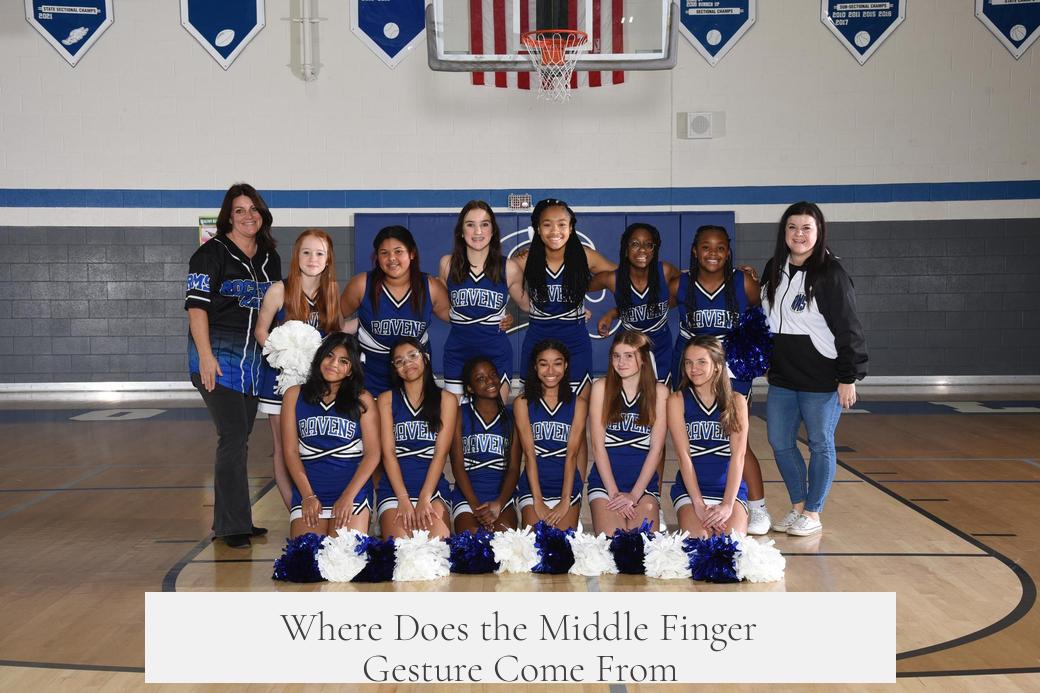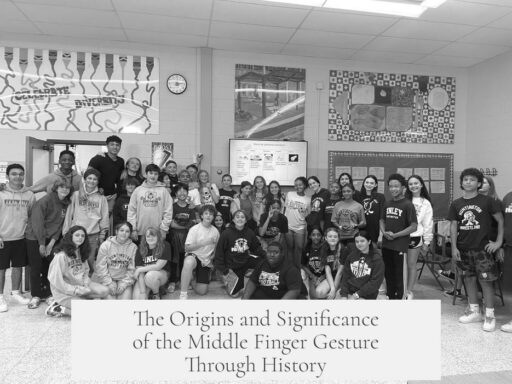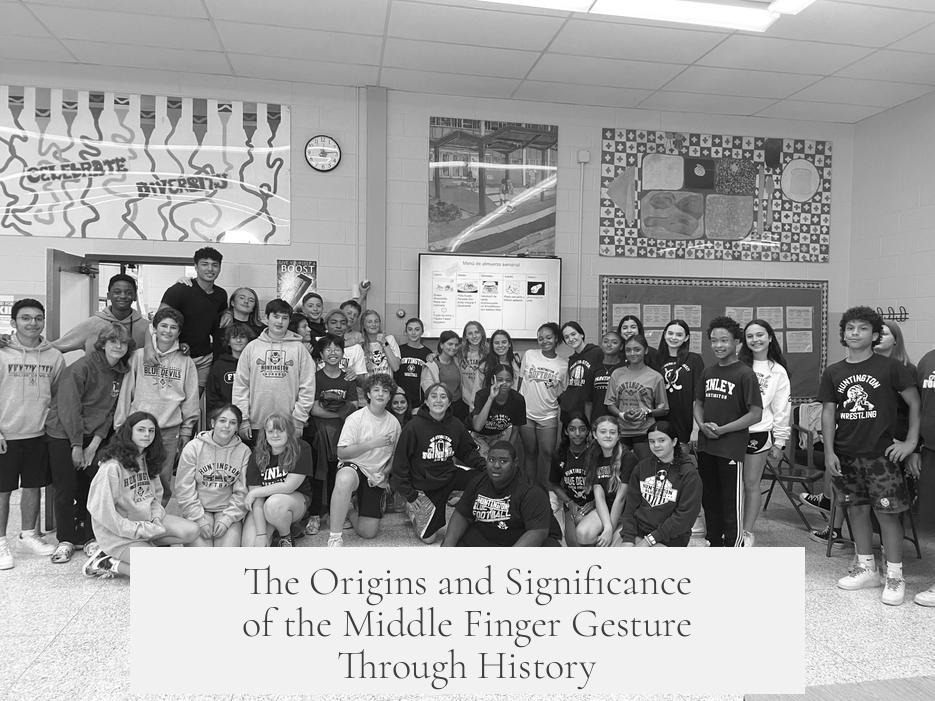The middle finger gesture originates as a phallic symbol and dates back to ancient times, notably ancient Greece, where it represented an erect penis. Its purpose was to insult or intimidate by symbolizing sexual aggression.
This gesture is not linked to the Hundred Years’ War story commonly told. That myth suggests that French forces cut off the index and middle fingers of English archers to prevent them from shooting. After the Battle of Agincourt, English archers supposedly raised their middle fingers to show they still had these fingers, taunting the French. Historians have found no evidence supporting this tale, which appears to be a modern invention.
The phallic origin is more credible. The middle finger extends alone, symbolizing the male genitalia. Scholars trace its use back to ancient Greece, where it was directed downward but had a similar insulting meaning. Over centuries, it evolved into an offensive gesture used to demean or threaten others.
Some explanations include evolutionary or Freudian perspectives. One theory suggests the gesture mimics an erect penis to intimidate opponents. Though such interpretations delve into psychology or biology, they connect to the earlier phallic symbolism. Yet, the emphasis remains on its role as a sexually charged insult rather than a mere sign of aggression.
This gesture is recognized worldwide with similar meanings, mainly insulting or expressing contempt. Its simplicity and visual directness help maintain its function across cultures and eras.
| Aspect | Details |
|---|---|
| Origin | Ancient Greece, phallic symbol |
| Common Myth | Hundred Years’ War archers’ fingers story (false) |
| Symbolism | Phallic, sexual insult |
| Psychological Theories | Evolutionary and Freudian views on intimidation |
| Modern Usage | Worldwide offensive gesture |
- The middle finger is an ancient phallic symbol, not a medieval battle taunt.
- The Hundred Years’ War story is a debunked myth with no historical evidence.
- The gesture symbolizes sexual insult and intimidation.
- Psychological theories link the gesture to evolutionary and Freudian ideas.
- It remains a globally recognized offensive sign today.
Where Does the Middle Finger Gesture Come From?

The middle finger gesture comes from ancient times where it symbolized a phallic sign meant to insult or intimidate. It is not some clever war tale or merely a Freudian leftover, but a vivid symbol dating back to ancient Greece and Rome, used to offend by waving what looks like an erect penis.
Ah, the middle finger—one of the world’s most recognized, yet misunderstood hand signals. You know the drill: you flash it, and suddenly tensions rise or laughter erupts. But have you ever stopped to wonder where this universally understood vulgar gesture actually comes from? Let’s dive deep into history, myth, and science to get you the real story behind this infamous finger.
The Hundred Years’ War Myth—Nice Story, But Nope
One popular tale suggests the middle finger comes from a brutal practice during the Hundred Years’ War. Supposedly, French soldiers cut off the index and middle fingers of captured English archers to disable their deadly bows. After the Battle of Agincourt, victorious English archers allegedly waved their intact middle fingers at the French as a defiant insult. Sounds pretty epic, right? Like a medieval mic drop or a bloody “talk to the hand.”
Unfortunately, this story is just that—a myth. There is no historical evidence the French routinely mutilated archers this way. The explanation originated as a nice folk tale to add drama and color but should be treated like a fun rumor rather than fact. Plus, if you think about it, why risk hacking off your enemies’ fingers only to have them flip you off with the same finger? Doesn’t quite add up.
What About the Evolutionary or Freudian Angle?
Here’s a take that’s oddly popular, especially in classrooms: the middle finger represents an erect penis. The gesture supposedly intimidates others by simulating the male organ, an ancient and primal threat signal. Intimidation through symbolic violence, if you will. Sounds like something straight out of a high school science class, right?
This idea aligns with Freudian psychology—everything is about sex, apparently. While the symbolism is basically accurate, calling the origin “evolutionary” oversimplifies and mixes modern psychology with history. There’s some truth here: symbols of power and offense often center around sexuality, but attributing the middle finger solely to evolutionary competition or puberty is a bit of a stretch.
The Real Deal: A Phallic Gesture from Ancient Greece
Hold onto your hats, because this is the core truth: the middle finger gesture is phallic, plain and simple. Its roots trace all the way back to classical Greece and Rome, where the extended middle finger symbolized an erect penis. The gesture was a crude way of insulting someone by “flashing” them with a symbolic organ—essentially saying, “I’m more powerful than you” or “you suck.”
Interestingly, in ancient Greece the middle finger was often pointed downward. Think of it as an early version of flipping the bird but with a slightly different angle. The idea was still clear: show dominance and insult using a phallic symbol.
This gesture didn’t just vanish with the fall of Rome. Variations of it appear in early modern Europe and beyond, reflecting a shared cultural understanding that the middle finger equals insult. So, when you flash the middle finger today, you’re tapping into thousands of years of human communication.
Why Does It Persist? Why Do We Still Care?

You might be wondering why, after centuries, the middle finger is still such a common gesture—especially when rude behavior tends to fade or evolve. The answer lies in its simplicity and raw expressiveness. No words needed. The gesture instantly conveys irritation, anger, or humor.
Its endurance also highlights how some symbols tap into deep human emotions and taboos. Sexuality, power, and dominance are evergreen themes, so it’s no wonder this gesture remains relevant. Plus, it’s oddly satisfying to express frustration without saying a word.
Practical Tips: Use It Wisely
- Know Your Audience: Not everyone appreciates the middle finger as a joke. In some countries, it carries different or more severe meanings.
- Consider Context: It can escalate conflicts quickly. Sometimes a raised eyebrow works better.
- Keep It Playful: With friends, it’s often taken as banter. With strangers, it might get you in trouble.
So next time you see someone flip the bird, remember it’s much more than an offhand insult. It’s a historic, cross-cultural symbol that connects us to human nature’s raw edges—power, defiance, and that universal urge to thumb your nose at authority.
Final Thought
Where does the middle finger come from? It’s an age-old phallic symbol rooted in ancient Greece, not a war-time story or just a Freudian quirk. Whether you use it with a chuckle or roll your eyes at its crudeness, appreciating its history adds a bit of spice to what otherwise seems like a simple rude gesture.
So, next time you catch someone flashing the middle finger, it’s not just a cheeky sign. It’s history, humor, and human nature all rolled into one stubborn digit.




